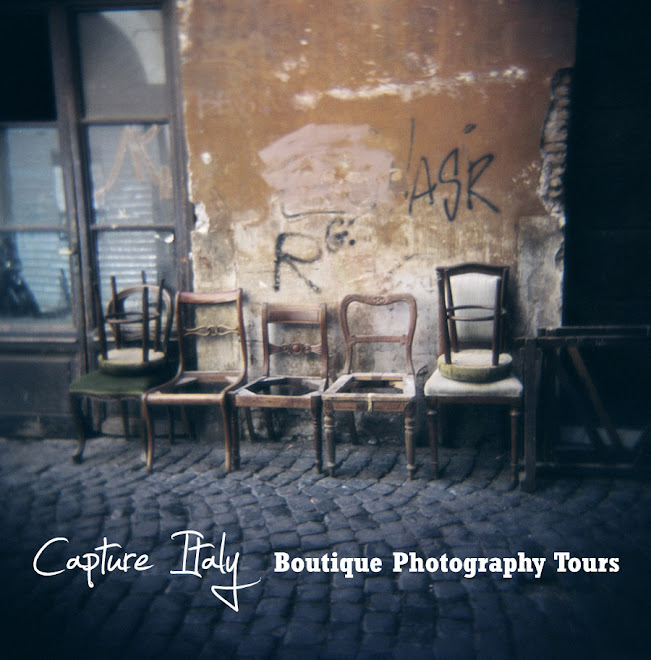Friday, July 27, 2012
two different perspectives of venice
The story behind the images:
Dianne and I were standing almost next to each other on the Grand Canal in Venice. We were looking at the same scene - but we captured two entirely different images.
When I looked at the scene I decided I wanted to capture the vertical lines of the mooring poles and the woman (I saw her as a line also) and I shot at a low angle to include the solid shape of the path. So, this image for me was shape and line - with the woman, her arm parallel to the mooring poles, as a point of interest.
Dianne was interested in the gondolier working on his gondola. Dianne physically went much closer into the scene and framed her shot around him. (You can see this gondolier in my image, at the very right-hand edge of the image.) Dianne saw a story unfolding in front of her - the end of the day for a Venetian gondolier.
Not only did we shoot entirely different parts of this scene, we then used our post-production software - Photoshop and Nik Software - for vastly different final images.
My image is quite soft and muted, which is how I felt when shooting this scene. The evening sky was soft, I felt relaxed and quite removed from the scene. I was an observer.
Dianne's image is vibrant and energetic - its colours are strong - we can see that the gondolier is still working, tying up his gondola. We get a sense of the movement of the water. We are actively "in" this scene. I think Dianne even ended up speaking with the gondolier. The woman in my scene simply wandered off, completely unaware she had been an element of my image.
(Be aware that your feelings when you're photographing often dictate what you photograph - and that's fine unless you are shooting to a brief, or you need a specific image. You then need to be able to separate your feelings and really see all the elements and possible points of interest of a scene and capture the most appropriate for the brief.)
Any lessons here?
We would encourage you when next travelling to not just shoot what appeals to you, but maybe give yourself some exercises to broaden your vision. This is what we do on tour - it might be an exercise in looking for and capturing line or colour, or perhaps it's an exercise in telling a story in a particular town... stretching yourself like this helps you improve your photographic vision.
Better photographic vision means you can look at a scene in front of you and see multiple photographic opportunities.
Equipment and settings used in Lisa's image:
Camera - Canon EOS 5D
Settings - f7.1, 1/30s, ISO 400, auto white balance, neutral picture style, shot in RAW
Lens - Canon EF 24-70mm f2.8L USM LENS
Focal length: 24mm
Equipment and settings used in Dianne's image:
Camera - Canon EOS 7D
Settings - f3.2, 1/160s, ISO 1000, manual white balance, shot in jpeg
Lens - Canon EF-S 17/55mm f2.8 IS USM LENS
Focal length: 20mm
Happy Shooting from Lisa and Dianne at Capture Italy







